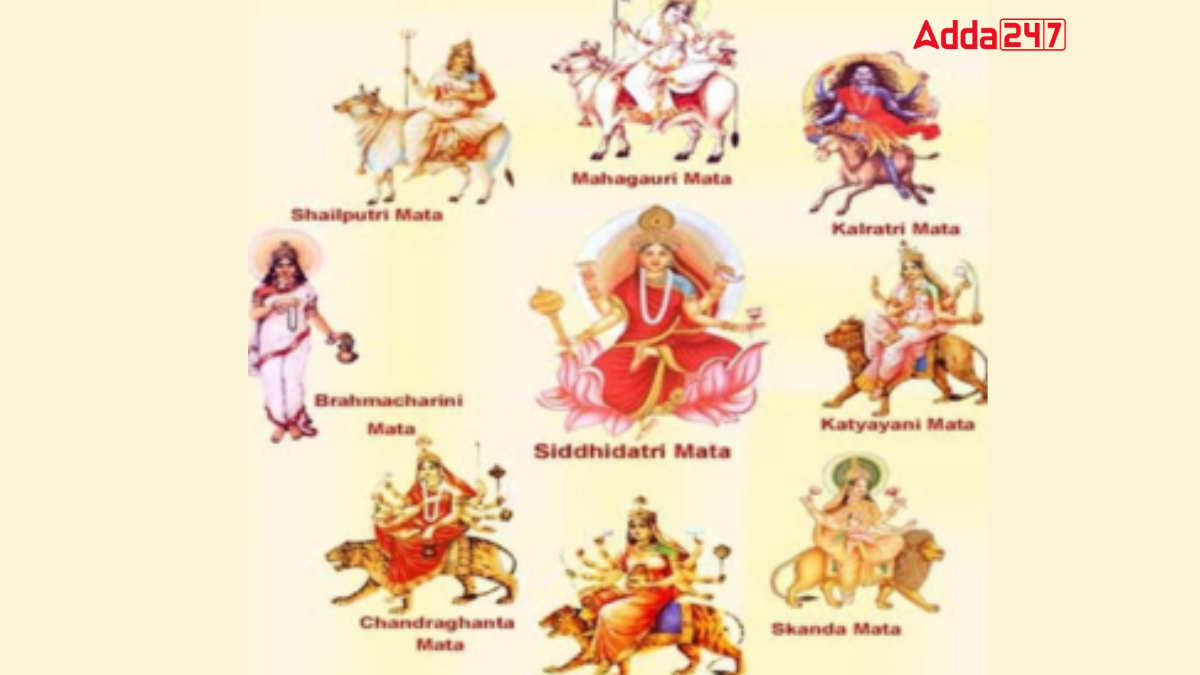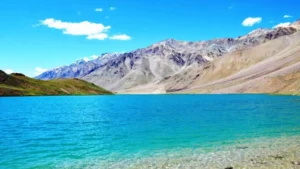Maa Durga, the sacred goddess in Hinduism, is worshipped in nine distinct forms during the festival of Navratri. Each form symbolizes different aspects of her divine power, ranging from strength and courage to compassion and wisdom. These nine forms, known as Navadurga, are believed to bestow blessings, protection, and prosperity upon devotees. Worshipping Maa Durga in her various forms helps followers overcome obstacles and find inner strength.
Navratri 2024
Shardiya Navratri 2024, celebrated from October 3 to October 11, is a nine-day festival dedicated to worshipping the nine forms of Goddess Durga. Observed during the autumn season, it is one of the most significant Hindu festivals. Devotees observe fasts, offer prayers, and perform rituals to seek blessings from the goddess. The festival concludes with the celebration of Vijayadashami or Dussehra.
Goddess Durga and Her Nine Avatars
Goddess Durga is one of the most important goddesses in the Hindu religion. She represents strength, protection, motherhood, and the power to fight evil. According to Hindu mythology, Durga fought a fierce battle with the demon king Mahishasura for nine days. On the tenth day, she defeated him, and this day is celebrated as Vijayadashami. During the nine days of Navaratri, people worship the nine different forms of Durga. These forms are known as the “Nava Durga.”
First Form of Maa Durga – Shailputri
Shailaputri is the first form of Goddess Durga. “Shaila” means mountain, and she is the daughter of King Himavat, the personification of the Himalayas. Shailaputri rides a bull named Nandi and carries a trident in one hand and a lotus flower in the other. She is worshipped on the first day of Navaratri.
Second Form of Goddess Durga – Brahmacharini
Brahmacharini is the second form of Goddess Durga, worshipped on the second day of Navaratri. She represents devotion and purity. Brahmacharini is shown holding a rosary in one hand and a water pot (kamandalu) in the other, symbolizing her simple and peaceful nature.
Third Avatar of Goddess Durga – Chandraghanta
Chandraghanta is the third form of Goddess Durga, worshipped on the third day. She is a fierce warrior goddess with ten hands and a third eye on her forehead. She always carries weapons and is ready to fight evil forces. The crescent moon on her forehead gives her the name “Chandraghanta,” which means “bell-shaped moon.”
Fourth Form of Maa Durga – Kushmanda
Kushmanda, the fourth form of Goddess Durga, is worshipped on the fourth day of Navaratri. Her name can be broken into “Ku” (little), “Ushma” (warmth), and “Anda” (egg), meaning she is the creator of the universe. She is also known as Asthabhuja Devi, the goddess with eight arms, and rides a lion.
Skandamata, the Fifth Form of Goddess Durga
Skandamata is the fifth form of Goddess Durga, worshipped on the fifth day. She is the mother of Lord Kartikeya (also known as Skanda), who sits on her lap. Skandamata is shown with four arms, holding lotus flowers, and riding a lion. She is a symbol of motherly love and care.
Katyayini, the Sixth Form of Goddess Durga
Katyayani is the sixth form of Goddess Durga, worshipped on the sixth day of Navaratri. She is a fierce form of the goddess, known for her warrior-like nature. She is named after Sage Katyayana, who prayed to Durga to be born as his daughter. She is shown with eighteen arms, holding different weapons.
Kalratri, the Seventh Form of Maa Durga
Kalaratri is the seventh and most fearsome form of Goddess Durga, worshipped on the seventh day. She is the destroyer of darkness and ignorance. Kalaratri rides a donkey and holds a scimitar and a thunderbolt. Though her appearance is terrifying, she blesses her followers with protection.
Eighth Form of Maa Durga – Mahagauri
Mahagauri is the eighth form of Goddess Durga, worshipped on the eighth day. She represents peace and purity. Mahagauri is shown with four arms, holding a trident and a drum, while her other hands give blessings and remove fear. She rides a bull or a white elephant.
Siddhidhatri, the Ninth Form of Goddess Durga
Siddhidhatri is the ninth and final form of Goddess Durga, worshipped on the ninth day of Navaratri. She is the giver of all spiritual powers or “Siddhis.” Siddhidhatri is shown seated on a lotus and holding a mace, conch, discus, and lotus. She is believed to have blessed even Lord Shiva with divine powers.




 Which Glacier is known as the Crown of H...
Which Glacier is known as the Crown of H...
 Which Lake is known as the Moon Lake? Kn...
Which Lake is known as the Moon Lake? Kn...
 Which Fruit is known as the Queen of the...
Which Fruit is known as the Queen of the...







